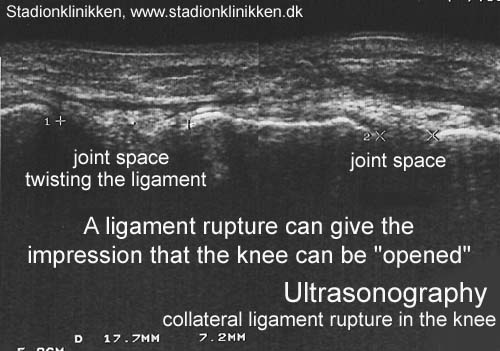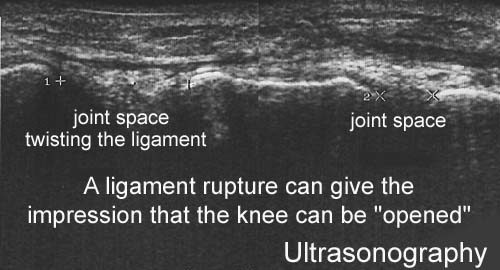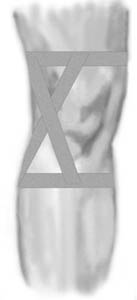




|
Ligament lesions of the knee joint in childhood |
TRAINING LADDER FOR CHILDREN AND ADOLESCENTS:
FOR CARTILAGE DAMAGE ON THE KNEE CAP
(CHONDROMALACIA PATELLAE)
STEP 2 |
Unlimited: Cycling. Swimming. Light jogging.
|
|||||||||||||||||||||||||||||
| Stretching is carried out in the following way: stretch the muscle group for 3-5 seconds. Relax for 3-5 seconds. The muscle group should subsequently be stretched for 20 seconds. The muscle is allowed to be tender, but must not hurt. Relax for 20 seconds, after which the procedure can be repeated.
The time consumed for stretching, coordination and strength training can be altered depending on the training opportunities available and individual requirements. |
TRAINING LADDER FOR CHILDREN AND ADOLESCENTS:
FOR CARTILAGE DAMAGE ON THE KNEE CAP
(CHONDROMALACIA PATELLAE)
STEP 3 |
Unlimited: Cycling with raised saddle. Swimming. Running with increasing speed and cautious directional change.
|
||||||||||||||||||||||||||||||||||||
| Stretching is carried out in the following way: stretch the muscle group for 3-5 seconds. Relax for 3-5 seconds. The muscle group should subsequently be stretched for 20 seconds. The muscle is allowed to be tender, but must not hurt. Relax for 20 seconds, after which the procedure can be repeated.
The time consumed for stretching, coordination and strength training can be altered depending on the training opportunities available and individual requirements. |
TRAINING LADDER FOR CHILDREN AND ADOLESCENTS:
FOR CARTILAGE DAMAGE ON THE KNEE CAP
(CHONDROMALACIA PATELLAE)
STEP 4 |
Unlimited: Cycling with raised saddle. Swimming. Running and spurting with sudden directional change.
|
||||||||||||||||||||||||||||||||||
| Stretching is carried out in the following way: stretch the muscle group for 3-5 seconds. Relax for 3-5 seconds. The muscle group should subsequently be stretched for 20 seconds. The muscle is allowed to be tender, but must not hurt. Relax for 20 seconds, after which the procedure can be repeated.
The time consumed for stretching, coordination and strength training can be altered depending on the training opportunities available and individual requirements. |
TRAINING LADDER FOR CHILDREN AND ADOLESCENTS:
FOR CARTILAGE DAMAGE ON THE KNEE CAP
(CHONDROMALACIA PATELLAE)
STEP 1 |
Unlimited: Cycling with raised saddle. Swimming.
|
||||||||||||||||||||||||||||||||
| Stretching is carried out in the following way: stretch the muscle group for 3-5 seconds. Relax for 3-5 seconds. The muscle group should subsequently be stretched for 20 seconds. The muscle is allowed to be tender, but must not hurt. Relax for 20 seconds, after which the procedure can be repeated.
The time consumed for stretching, coordination and strength training can be altered depending on the training opportunities available and individual requirements. |
Objective: To control the movement of the kneecap so that it glides up and down in a direct line. The tape should immediately provide less pain, and is a good indicator of whether the patient will gain any benefit of a kneecap stabilising bandage. |
|||
 |
|||
| Application: The knee should be held slightly bent when applying the tape. One anchor is applied above the knee and one below (A & B), and should be open to the rear. A strip is applied (C) over the kneecap’s lower outer half, so that half the tape is over the kneecap. The tape is in line with the edge of the kneecap, and in this way has a sloping course, lifting and pushing the kneecap slightly inwards. The second strip (D) is applied over the kneecap’s upper outer half, so that half the tape is over the kneecap and runs slanting downwards over the first strip. Finish with further strips on top of the anchors A & B. |
|
Effect of a patellar realignment brace on patients with patellar subluxation and dislocation. Evaluation with kinematic magnetic resonance imaging. |
|
Operative versus closed treatment of primary dislocation of the patella. Similar 2-year results in 125 randomized patients. |